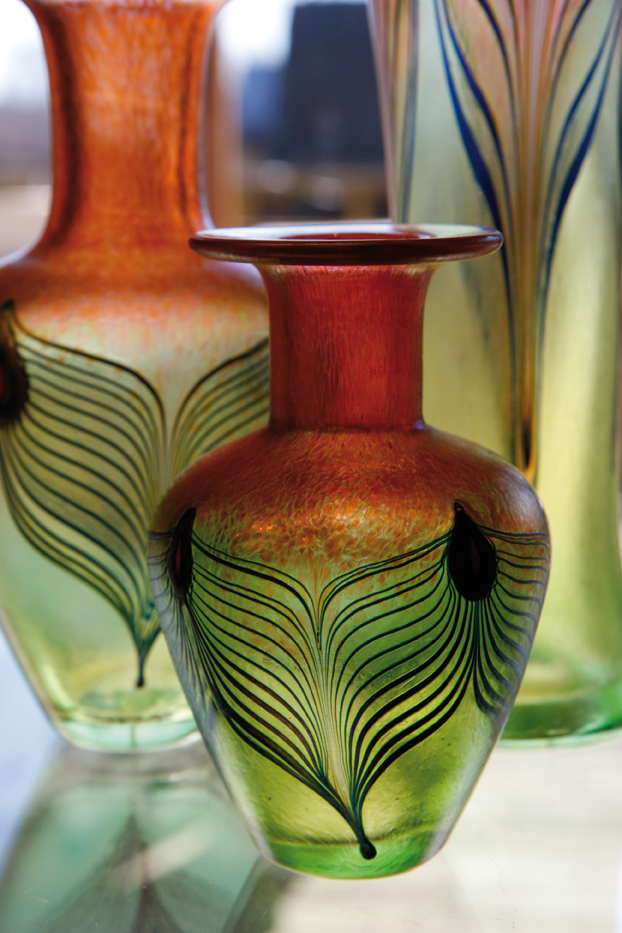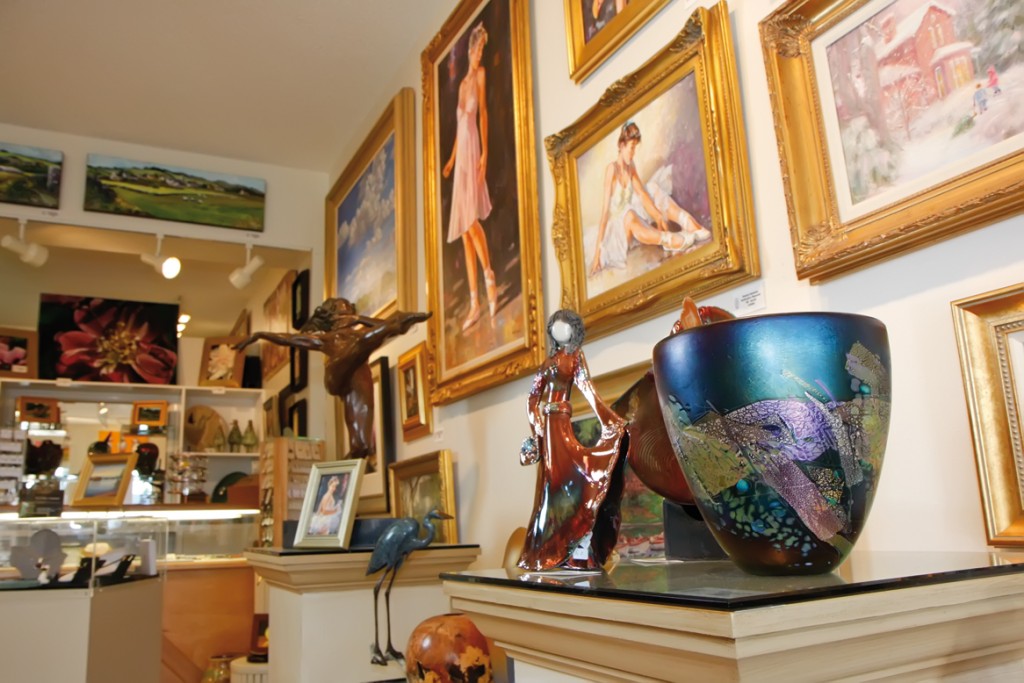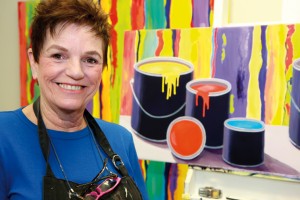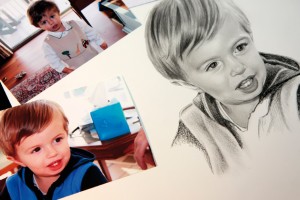Buying Local Art: Bringing Talent Home
 Someone once said that buying art is a bit like falling in love. You know, that fluttering feeling when you meet that special someone? Once you begin to look at art and develop a preference for certain styles, the same feeling can come over you. It can truly be love at first sight! Art has no barriers. There is some style of art for everyone.
Someone once said that buying art is a bit like falling in love. You know, that fluttering feeling when you meet that special someone? Once you begin to look at art and develop a preference for certain styles, the same feeling can come over you. It can truly be love at first sight! Art has no barriers. There is some style of art for everyone.
Luckily we live in an area where art abounds. Steeped in cultural history, the Blue Ridge, Piedmont and Southwest Virginia areas are laden with art and artists who use a variety of media. From sculptors and potters to artists who work with fiber, glass and paint, there is something for everyone interested in collecting local art.
Just look in the downtown areas of most small towns and cities in our area. Galleries, studios and retail shops are displaying and selling local art. According to Patrick Ellis, who with his partner Mitchell Bond owns Goose Creek Gallery in downtown Bedford, “People are hungry for interesting things.” While artists have always been in the area, Bedford is being revived with local art and artists. He points out that they help transform an area. When people buy local art, it helps breathe life into the town. Shops provide access to art and the artists themselves, as well as offer venues for the artists to sell their work. Local venues benefit not only the buyers, who have access to a fine selection of art, but the artists, merchants and the local economy.
Why buy local art? According to Patrick Ellis, people often come into the gallery in search of local scenes. “Scenes of the Peaks of Otter are a big seller,” he says. Though the scenery may be right in our backyard, people enjoy having an image of the Peaks in their homes. Others, who have moved away or left for a prolonged visit, like to take a part of their locale with them, and find comfort in having scenes from back home on display.
Others search out local art to support local artists. “There is often some connection between loving the art and loving the artists,” says Ellis. At their gallery, Ellis and Bond encourage artists to interact with people. They schedule gallery openings and events so the public can meet the artists and even watch them at work. In this way, customers are not buying from a stranger, but from an artist whom they actually know.
 Educate Yourself
Educate Yourself
Do not be ill-at-ease around art. There is really no mystery about it. If you want to collect local art, visit galleries, retail shops and art shows that display local art. Do not plan to buy at first. Just go and look. Ellis points out that it is important to familiarize yourself with what is out there. Learn what is happening in Roanoke’s local art scene by visiting The Arts Council of the Blue Ridge online at www.theartscouncil.org. If you are interested in an easy day trip to Lynchburg, check out happenings there through James River Council for the Arts & Humanities at www.jamesriverarts.org. Local newspapers, too, often list gallery openings, art shows and other art-related activities. Area art museums associated with local colleges also provide a great opportunity to learn more about art. Their shows often feature local artists, some of whom have gone on to national fame.
A shop like The Little Gallery on Smith Mountain Lake is a good place to view, learn about, and purchase local art. Partners Kay King and Carol Swain explain that they carry art to fit everyone’s tastes and budget. While many of their pieces represent regional artists, they do promote several local artists as well and exhibit paintings, sculptures, glass, pottery and more. Swain says, “Some people think that they have to go far to find good art.” But King points out, “We find some of our local artists are as good as those across the country.”
Buying from a gallery can be daunting to a new art collector, but Swain puts visitors at ease. “You don’t have to have any kind of education to come in and buy art,” she says. When visitors stop in their gallery, the staff is available to answer questions and talk about the artists. This provides would-be collectors with an opportunity to learn what they like and don’t like, as well as what they can afford. A gallery should provide the personal touch that allows visitors to get to know more about the artists and their work.
Both Patrick Ellis and Mitchell Bond agree that galleries should be welcoming and friendly places. Bond points out that visiting a gallery should not be unlike visiting a museum. The Little Gallery’s Swain says, “We don’t care if people just come and look. We are not all about buying and selling.”
Prices for local art can vary tremendously, depending on the artist’s experience, medium used and other factors. Some art can be quite affordable, while some requires more of an investment. Places like The Little Gallery, for example, offer a wide range of price points for one-of-a-kind pieces—pottery for as little as $30, and prints and paintings from a few hundred to thousands of dollars. In the same respect, don’t expect bargain prices at galleries. They represent artists who have worked hard at their craft and expect to be paid a fair price for their work. Regardless, collectors should expect galleries to be upfront about pricing. A good gallery will post the price near each piece. In some states, New York for example, galleries are required to provide a written sheet listing prices of all their work.
Galleries should also know the artists who are exhibiting and be willing to share that artist’s name and contact information. That personal contact is important and can affect the sale of the piece.
Customers who show an interest in purchasing a piece should be able to take it home on approval. Both Goose Creek Gallery and The Little Gallery agree that people who make an investment in art should be able to see how it looks in their homes.
As you become more comfortable looking at art and talking to artists, the next step might be to visit an artist in his or her studio. This is especially interesting if you have developed a taste for that particular artist’s work. Sculptor Betty Branch has a studio in downtown Roanoke. She believes that visiting an artist at work is an excellent way for a beginner to learn about collecting local art. She suggests that you learn more about the artist and his or her work before making an appointment to visit an artist’s studio.
 Making the Sale
Making the Sale
After exploring what type of local art is available in the area, of course the next step is purchasing art. This is the fun part! With all that homework done, deciding what to buy should be relatively easy. According to Carol Swain, “It will speak to you!” Kay King adds, “It speaks to your soul!” Emotionally, you are drawn to that piece of work. It means something to you. Betty Branch thinks that “art should lift us up and make us feel good.” She recommends that you “only buy what you truly love.”
Art certainly has a way of developing a connection to the owner. According to Carol Swain, when people sell a house and their furnishings, rarely will they sell their artwork. She goes on to say, “I believe original art changes people’s lives. It actually can affect their well-being when they stare at a beautiful painting.”
 The Eye of the Beholder
The Eye of the Beholder
What is “real” art? Does Uncle Harry’s drawing of the family dog constitute art? Or what about that print of the Peaks of Otter? According to Patrick Ellis, “Real art has a message and reflects the community and culture of a region.” King describes “real art” as something you absolutely love and cannot live without. “If it is an original and someone likes it, it is art!”
Swain makes the point that when you buy an original, you are the only one who has it, that it is a one-of-a-kind piece. According to Ellis, a print is just not the same. “Why buy a copy when you can buy a real ink-on-paper painting?” He explains that prints were designed to get art to the masses, but that an original carries with it a deeper meaning. “There is something alive about original art that a print cannot capture,” he says. However, as Bond points out, some copies—like etchings, wood blocks and silk screenings—involve an artistic process that adds meaning to the piece.
 Making an Investment
Making an Investment
While many people collect art because they love it, there are those who collect for investment purposes. In fact, experts in national magazines and financial journals indicate that art can be an excellent investment. But like most investment opportunities, it can be uncertain. It may not show good judgment to collect art solely for financial gain.
It is always nice if a piece of your art has value, but it is not always easy to determine. The best way to establish this is to have a piece appraised by a professional art appraiser. A company like Ken Farmer Auctions & Appraisals, LLC, located in Radford, Virginia, which is nationally respected and recognized, provides this type of service. Bob Miller, an appraiser with the company with a specialty in art, said that he sees a lot of local art in his business. He said that local art without a regional or national reputation should be purchased based on eye appeal. One can “hope that [the artists] become better known and more desirable.” He points out, “If you fall in love, it does not matter who painted it.” Patrick Ellis concurs, suggesting that buying local art as an investment may be “risky business.” He maintains: “Buy it because you love it!”
Aside from actually getting it appraised, when considering the purchase of a piece of art, how can you tell if it is priced appropriately? Make sure that it is an original and that it is signed by the artist. Carol Swain says, “When you see a lot of people attracted to the same artist, it’s a sign of a valued artist.” As you learn more about the artist and his or her work, you will learn to recognize the artist’s reputation and price range.
While we may want to purchase a piece of art purely for intrinsic reasons, hopefully it will not land in a closet. A spot must be found in the house to showcase it. Both Ellis and Bond prefer to have their clients decorate around their art. As Kay King points out, “Fine art does not have to match the sofa!” If you love the piece, it will find the perfect place in your home. And never worry about running out of space. “There is never too little wall space.” According to Ellis, there is always a place to display art. Betty Branch agrees. “If a piece of art resonates with you, it is inevitable that the piece will work with your style,” she says.
While it is important to be an educated buyer when collecting local art, buy it for its emotional, sentimental and aesthetic value. Art can beautify your surroundings and inspire you for a lifetime.







Molly Carpenter
Thank you for this. Our little county is filled with talented artists that need the support of local people and businesses. Art can indeed bring interest and identity to local culture!